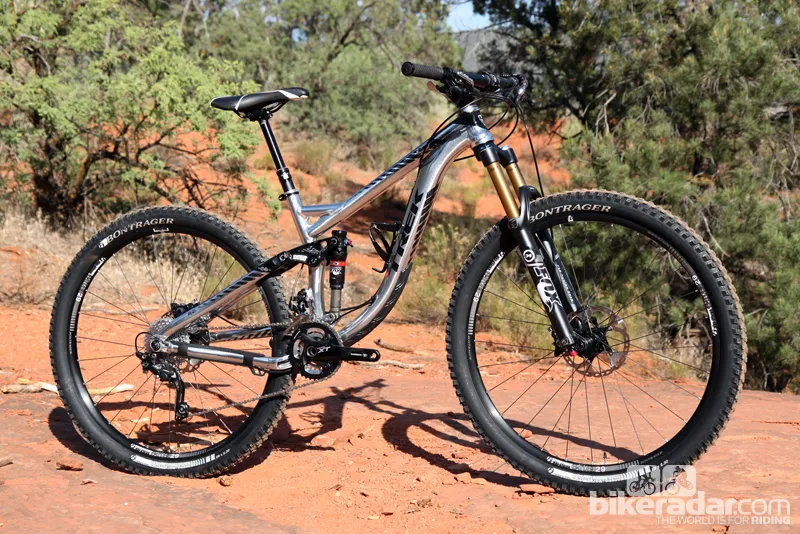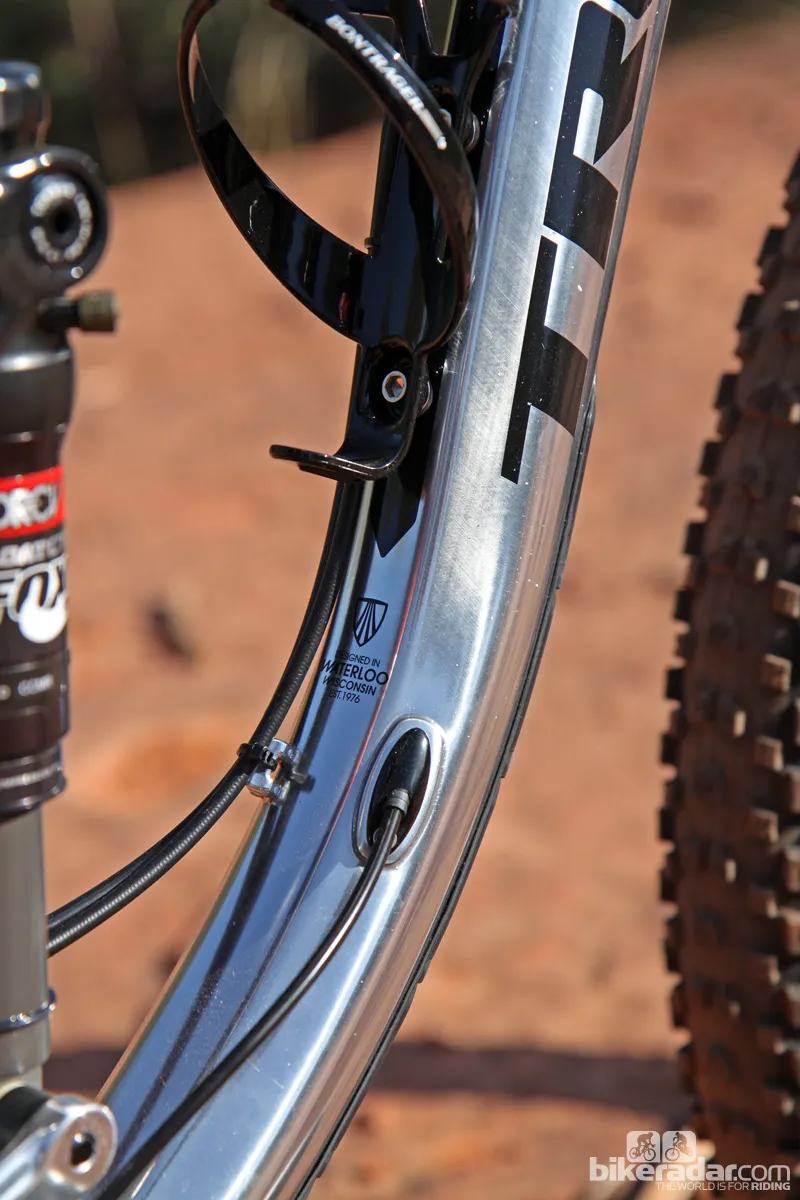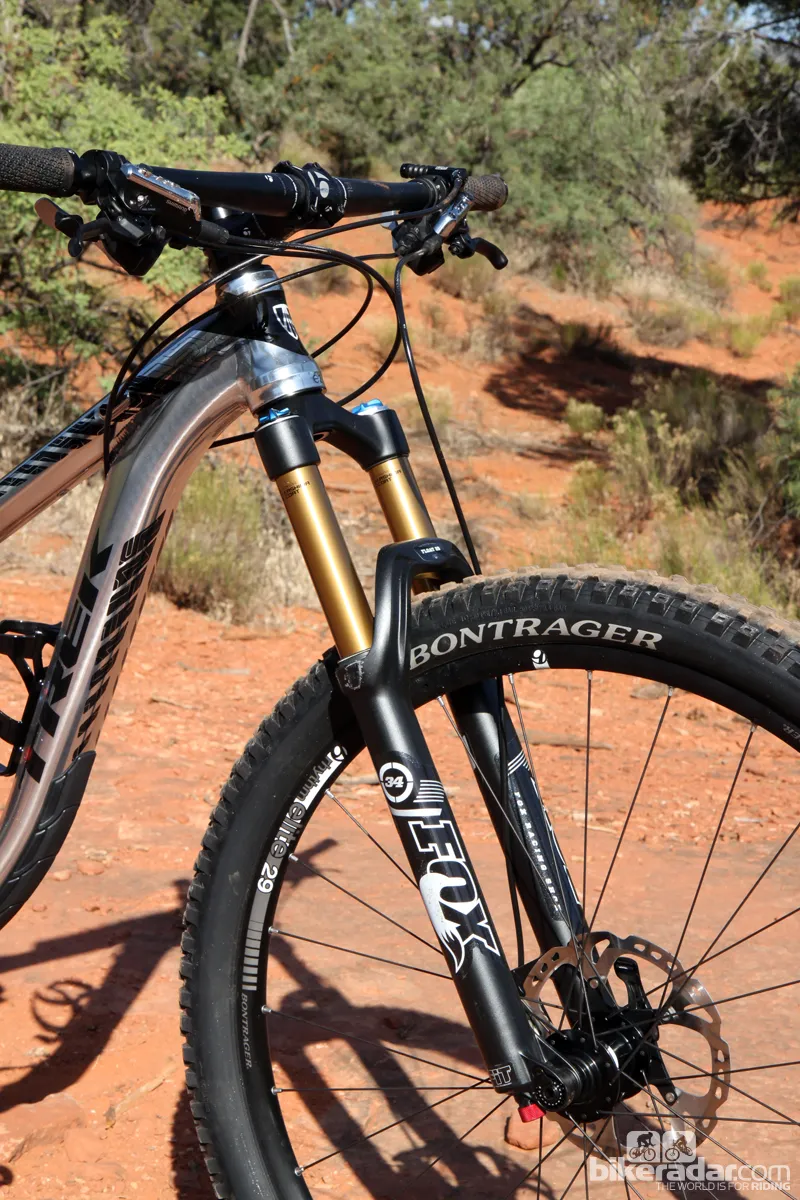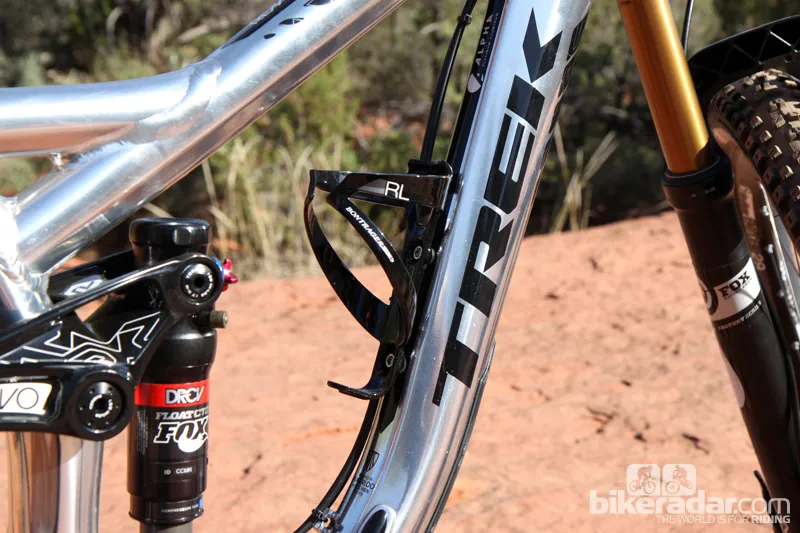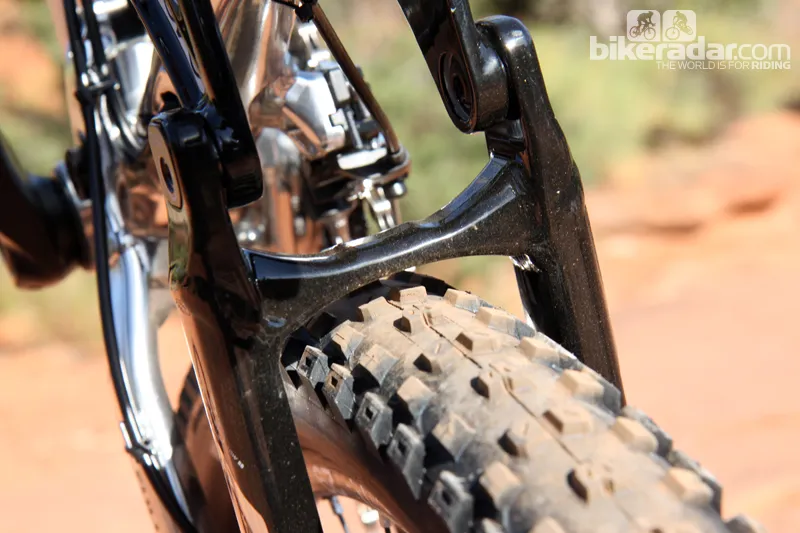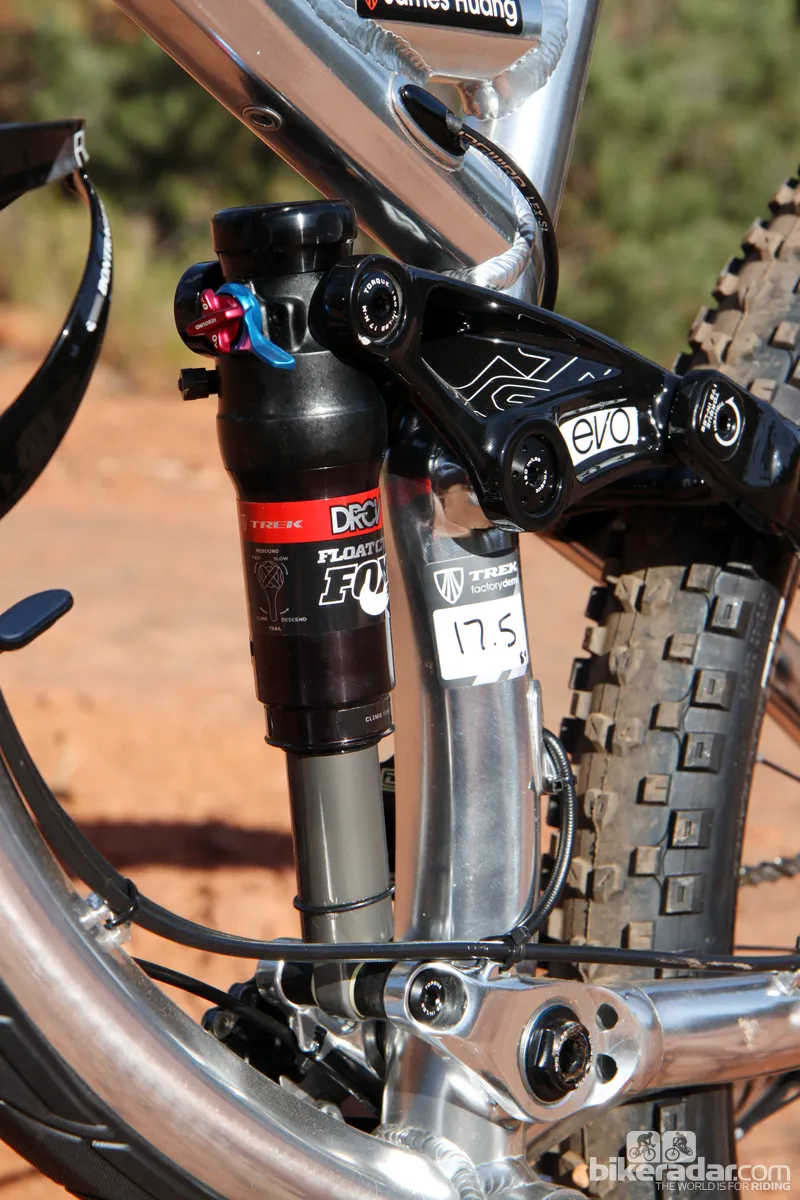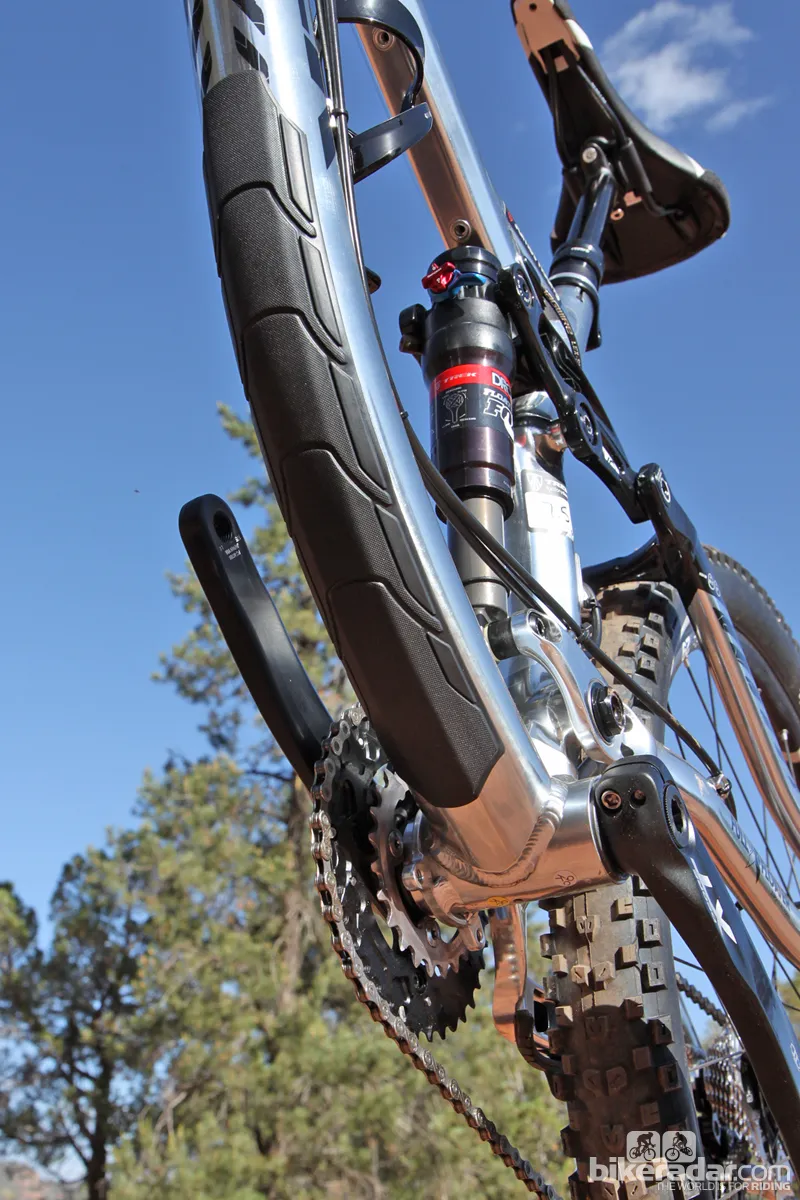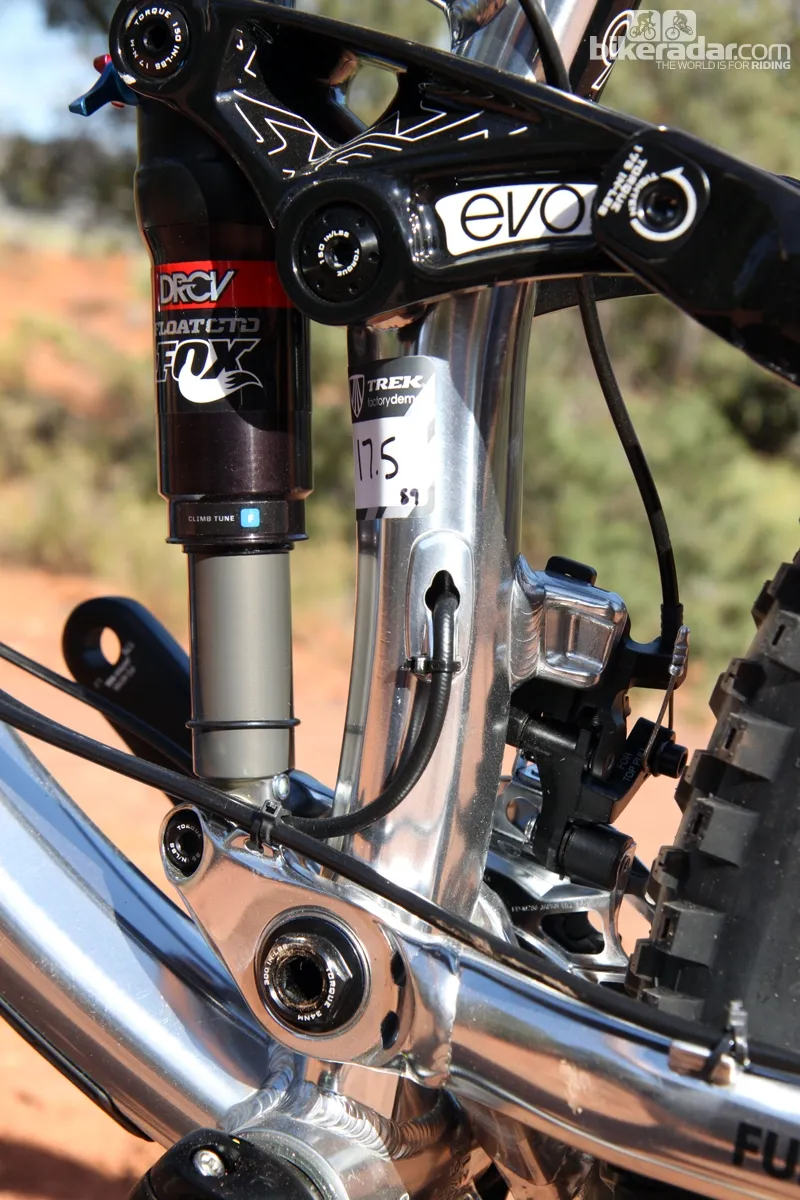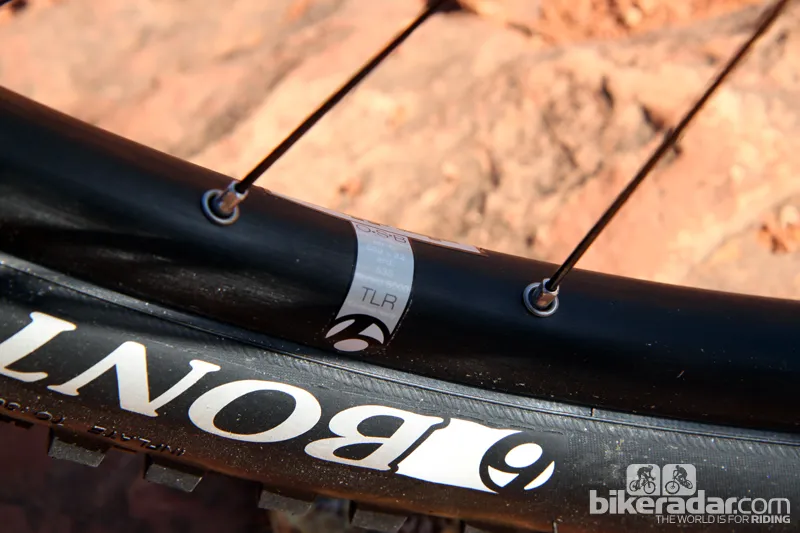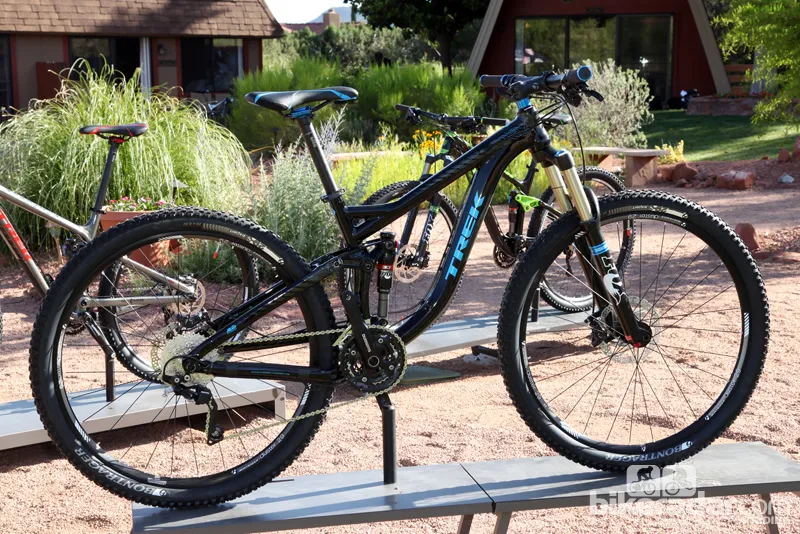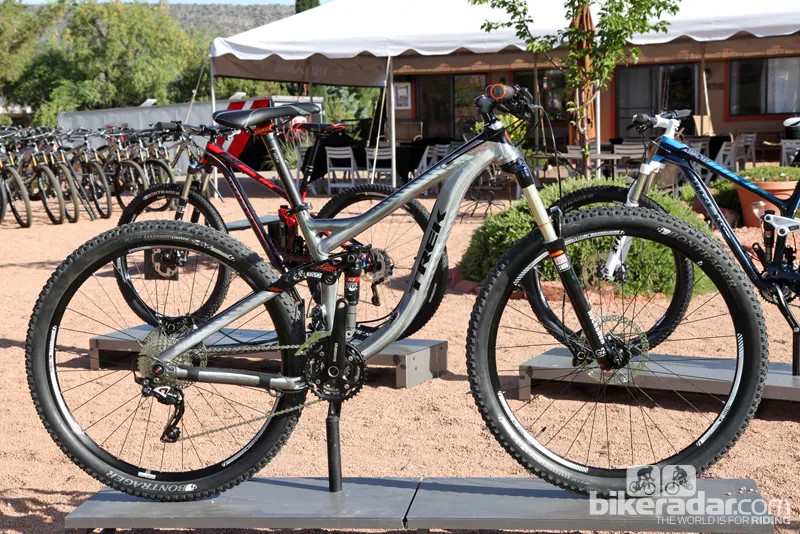Trek took its sweet time introducing 29er versions of its popular Fuel EX and Remedy models. While we were impressed with the former at the company's recent launch event in Sedona, Arizona, it was the Remedy's awesome capabilities that truly blew us way.
Big, fat tires, 140mm of well-tuned suspension and a gloriously stout front end yield supreme confidence to let you barrel over trail obstacles with reckless abandon, but the Remedy 29's fantastic handling also gives it the grace and agility to mean you don't have to.
- Pros: Very stiff and predictable chassis, fantastic handling, great suspension, superb drivetrain and brakes
- Cons: Heavy wheels dull the otherwise sharp reflexes
Ride & handling: Big bones but light on its feet
Trek's 26in Remedy was already a capable machine, but the 29in version is even more so. Our top-end Remedy 29 9 tester was wonderfully stout and solid from tip to tail, and it's especially noticeable up front, given the burly aluminum front triangle, usefully wide 750mm aluminum handlebar, and sturdy Fox 34 Float fork.
Add it all up and you get a wonderfully predictable front end that you can truly drive hard into rough terrain, confident that the line you chose is the one the front wheel will follow.
Charging down the tricky Highline descent in Sedona, Arizona – with its myriad drops, steep chutes, and variable grip – was simply no problem. The bike barrels over square-edged rocks without missing a beat, and rails rough corners with far more confidence than a visual inspection of the trail conditions would normally allow.
That stiff front end paid dividends even at slower speeds on the far more treacherous Hangover trail, where misplacing your tires by just a centimeter can mean the difference between making it around a corner or tumbling down a steep rocky face. Few places we've ridden illustrate the 'look where you want to go' edict so well.
As on the previous Remedy, rear suspension performance was excellent, with a supple feel off the top, a deep well of useful travel thanks to the Trek-exclusive DRCV-equipped rear shock, and good bottom-out control (which we used more than once). It's a lively feeling rear end, too, with lots of mid-stroke pop to help spring you out of bermed corners and dips in the trail.
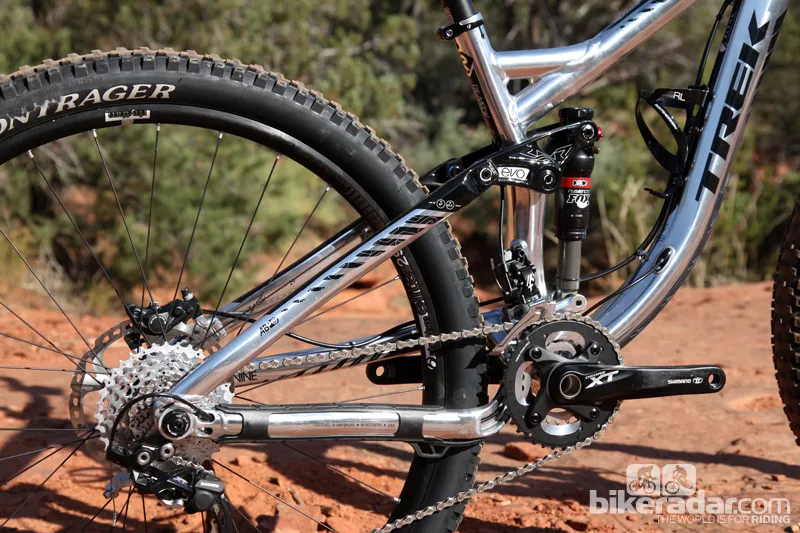
Trek sticks with its tried-and-true rear suspension design
Surprisingly, we found the new Remedy 29 to actually feel more nimble than the 26in version, despite having a similar bottom bracket height and chain stays that are about 12mm longer. While the 26in Remedy feels tall and is occasionally slow to transition from edge to edge, the 29 feels lower to the ground and quicker to change direction at speed. Some credit, perhaps, goes to the longer top tubes and shorter stems relative to comparably sized 26in Remedy models.
As always, very tight confines expose the long-travel 29er's greater overall length. But, even then, Trek has done a good job of making the 29 minimally cumbersome. Thanks to an increased-offset fork crown, the trail dimension is nearly identical to that of the 26in bike, so the front end feels appropriately light and not at all floppy.
There's no getting around the heft of the new Remedy 29 9, though. It has a total weight of around 13.5kg (29.76lb) for a 17.5in frame without pedals, and nearly 3.5kg (7.72lb) wheels and tires (not to mention the increased inertia given the larger diameter). So don't expect to set any acceleration records, but the bike pedals impressively well, especially for a model with this much capability.
Maintain a steady pace and you can rest assured that the rear end will faithfully claw its way up steep and rocky climbs. The active suspension does an excellent job of maintaining traction, too, and we rarely switched the Fox Float CTD rear shock out of the fully open mode, even on the fireroad climb up to the Hangover trailhead.
Frame: Burly aluminum construction plus Trek's trademark suspension
Trek made no mention of a carbon Remedy 29 chassis – although you can bet the farm that one is coming – but there's little to complain about with the all-new aluminum one. While we can't comment on the frame weight (we weren't able to tear one down for an actual measurement at the launch event), it's unquestionably rigid, with large-diameter, hydroformed tubing throughout and corresponding oversized stays to maintain that stiffness from tip to tail.
Subtle details include the S-bend down tube that creates enough room for a water bottle cage, and the steeply sloped top tube and short strut that reinforces the seat tube while leaving plenty of standover clearance.
Trek applies its usual bag of suspension tricks to the new Remedy 9's rear end, including the Full Floater dual-dynamic shock mounts for a more finely tuned spring rate, ABP (Active Braking Pivot) concentric rear dropout pivots that supposedly reduce the effects of braking on suspension performance, and the magnesium Evo rocker link that ties the seat stays to the shock.
A pair of flippable chips at the rear of the Evo link allow for slightly adjustable frame geometry, too, with the low position offering a 67.5-degree head tube angle and 350mm (13.78in) bottom bracket height. The high position delivers a steeper 68.3-degree head tube angle and raises the bottom bracket by 9mm. We did our testing with the bike set in the low position.
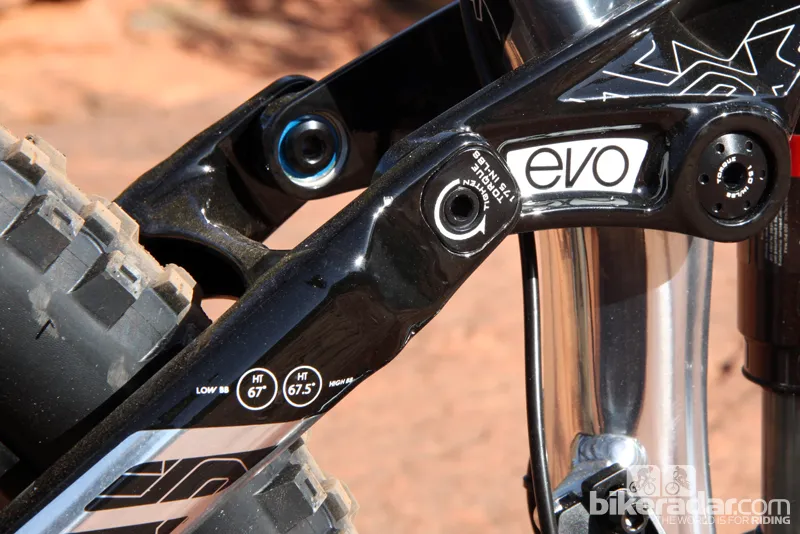
Flippable chips where the seat stays are joined to the rocker link
Other details include a mix of internal and external cable routing – including a port for stealth-style dropper posts, a tapered 1 1/8in to 1 1/2in head tube, a 92mm-wide bottom bracket shell with press-fit cups for use with standard 24mm-diameter spindles, cartridge bearing pivots and aluminum hardware throughout, and molded plastic guards for the down tube and driveside chain stay.
Equipment: Fantastic Shimano Deore XT group and solid kit but weighty wheels
The build kit on the Trek Remedy 9 29 is unapologetically workhorse. Included in the mix is a nearly complete Shimano Deore XT 2x10 group (a KMC X10 chain is the only substitution) and a RockShox Reverb Stealth dropper seatpost with Trek's Bontrager house brand filling in the rest.
As usual, the Deore XT drivetrain was utterly flawless, with precise chain movement, excellent tactile feedback from the trigger shifter paddles, and quiet running even after hours in the ultra-fine Sedona dust.
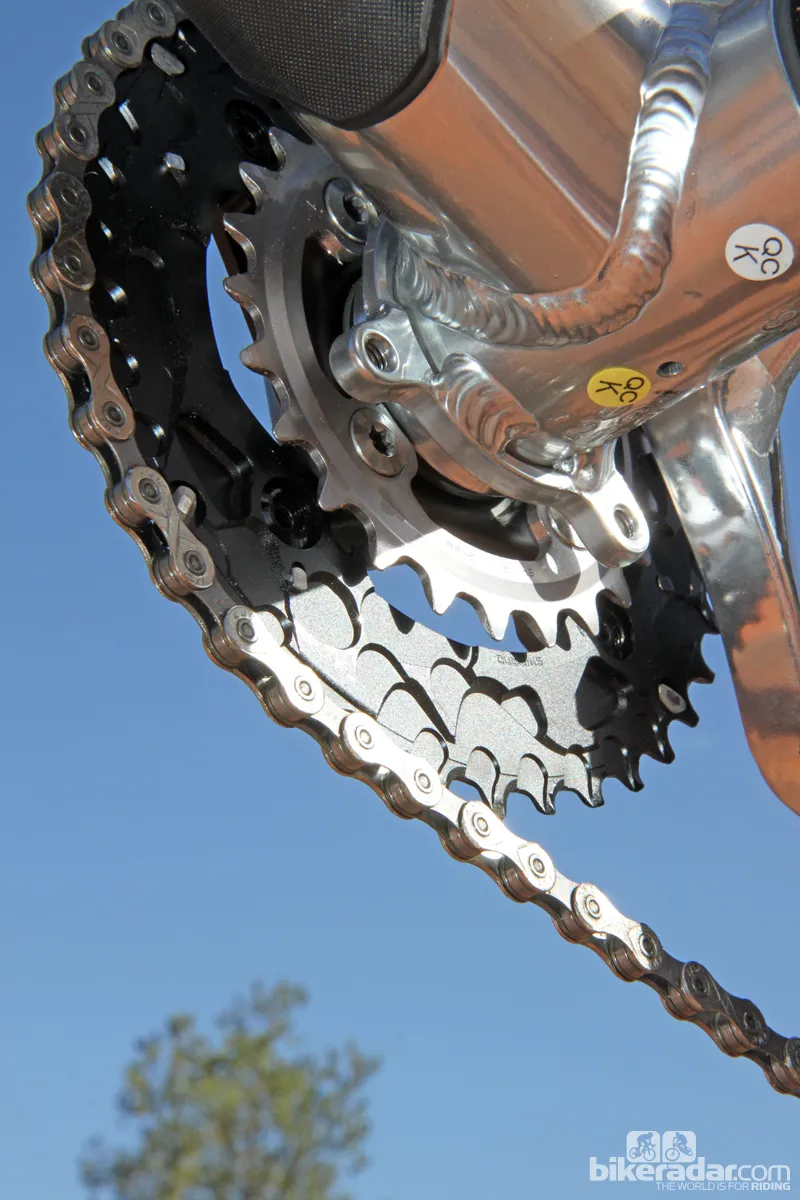
Trek specs the Remedy 9 29 with a Shimano Deore XT 2x10 drivetrain
Ditto for the matching hydraulic disc brakes, which provided tremendous power (partially thanks to 180mm rotors front and rear) as well as fantastic control – which we tested thoroughly on the Hangover trail's steep, shear rock descent.
We had no issues with the majority of the Bontrager gear. The Rhythm Pro stem was sturdy with its generously proportioned extension and beefy handlebar clamp, the Race Lite aluminum bar was pleasantly rigid and usefully wide at 750mm across, and while the foam seemed softer than on aftermarket versions, the Evoke 2 saddle was still comfortable after our third ride of the day.
Bontrager has made enormous leaps forward with its tires in recent years. The Remedy 9 29's XR3 Team Issue treads were meaty and grippy, with their well-reinforced knobs clawing tenaciously into the loose Arizona ground. They're also reasonably light considering the true 2.3in width and carry speed well. We wished for a slightly softer compound on bare rock, though.
The wheels are a bit more disappointing. Currently, Trek's website lists the stock wheelset as the new Bontrager Rhythm Elite model with its trick Rapid Drive rear hub, but that's a typo – production bikes are actually coming with the old model, complete with about 200g of extra mass and a far slower-engaging rear hub. We tested the Remedy 29 9 with both old and new wheelsets and the new one is noticeably better.
